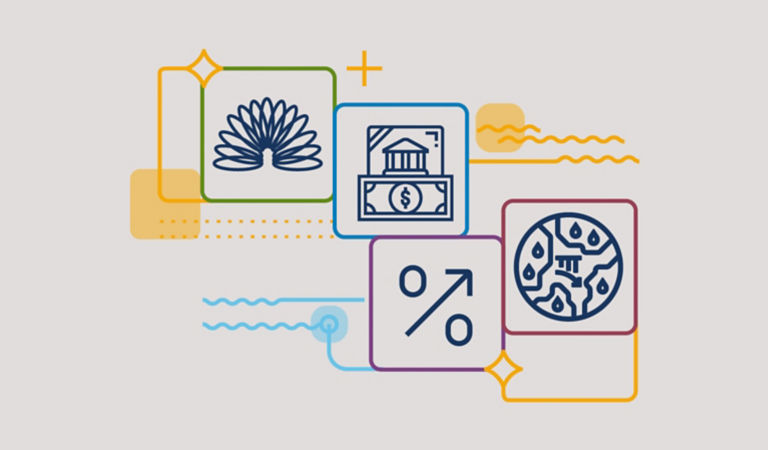It has been just over a year since the US Treasury yield curve inverted,1 typically a reliable precursor to recessions. Yet the resilient consumer appears to have delayed a slowdown in US economic growth…for now. Perhaps this is an indication that US Federal Reserve (Fed) policy is working with a typically long and variable lag? We still expect the US economy to enter recession sometime in 2024, and, therefore, advocate a defensive credit risk posture. But we observe some dispersion across fixed income sectors and still see opportunities to add value through sector rotation and security selection.
Are policy rates too restrictive?
The Fed has tightened monetary policy aggressively over the past 18 months to bring down inflation. The rate of change in short rates is significantly higher than during any period observed over the past 35 years, raising borrowing costs for consumers, business, and governments. If rates eventually prove too restrictive, this could lead to a significant slowdown in economic activity. While financial conditions have tightened in recent months, driven primarily by the increase in longer-term US Treasury yields, this has not yet broadly flowed through the economy. Credit remains widely available, and consumers maintain above-trend spending patterns. We expect, however, that this will change in 2024 as the lagged impacts of tighter monetary policy take hold. The onsets of past recessions have typically followed the yield curve inversion by an average of 12 – 18 months, so the clock is already ticking.
While nominal rates have increased sharply, this has occurred against a backdrop of elevated inflation — both in realized data and in expectations. Because of this, real rates — which we view as a better gauge of the attractiveness and cost of various investments and purchases, respectively — are not currently very restrictive. But if inflation pressures continue to abate, elevated real rates, due to not cutting rates quickly enough, could slow economic activity significantly. This restrictive state could lead to a recession and credit crisis. If, instead, inflation remains elevated, the Fed will likely be forced to resume hiking policy rates. While this action may postpone a credit crisis, it would, in our view, make it more severe. Under either scenario, we think credit sectors would underperform government bonds.
Shifting focus to issuer-level ideas from broad sector themes
We have observed meaningful spread compression across fixed income sectors since March, both in terms of the level of spreads and in the magnitude of relative value dislocations. Because of this, we see more attractive opportunities to add potential alpha through issuer-level investment ideas.
As we expected coming into 2023, evidence is beginning to emerge of cycle indicators turning negative. Default rates for bonds and loans have recently been rising, suggesting that restrictive monetary policy is impacting corporate income statements. And while they are still spending, consumers are also starting to show some cracks, as highlighted by a recent increase in the unemployment rate and evidence of declining consumer confidence.
Finding opportunities in higher-yielding credit sectors
Despite looming (and growing) economic recession risks, we see several potential opportunities in higher-yielding credit sectors (Figure 1). While these excess return forecasts assume that spreads will revert to their historical medians, our slightly more bearish forecast incorporates some degree of spread widening given our expectation for an economic slowdown. In our view, some of the most compelling opportunities in fixed income credit sectors include:
- Additional Tier 1 European banks (AT1s/CoCos): Banks for which the trajectory of fundamentals remains positive and are trading below par, offer the potential for price appreciation if called by the issuer.
- Credit risk transfer (CRT) bonds: These securities continue to be supported by strong housing data releases and a favorable technical backdrop: Supply remains limited while investor flows have been positive.
- Agency mortgage-backed securities (MBS): Spreads on MBS have widened on the back of elevated rate volatility. MBS excess returns also tend to be less correlated with credit risk and hence add some diversification to credit portfolios.
- High-yield derivatives: Within high yield, one of our highest conviction ideas is the price differential between high-yield credit default swaps (CDX) and their underlying cash bonds. Compared to history, high-yield CDX offers an attractive relative spread advantage to cash.
Conversely, emerging markets (EM) USD-denominated sovereign spreads remain in the tightest quintile relative to history. As a result, we think it is prudent to consider reducing EM sovereign exposure in favor of the opportunities outlined above.


























